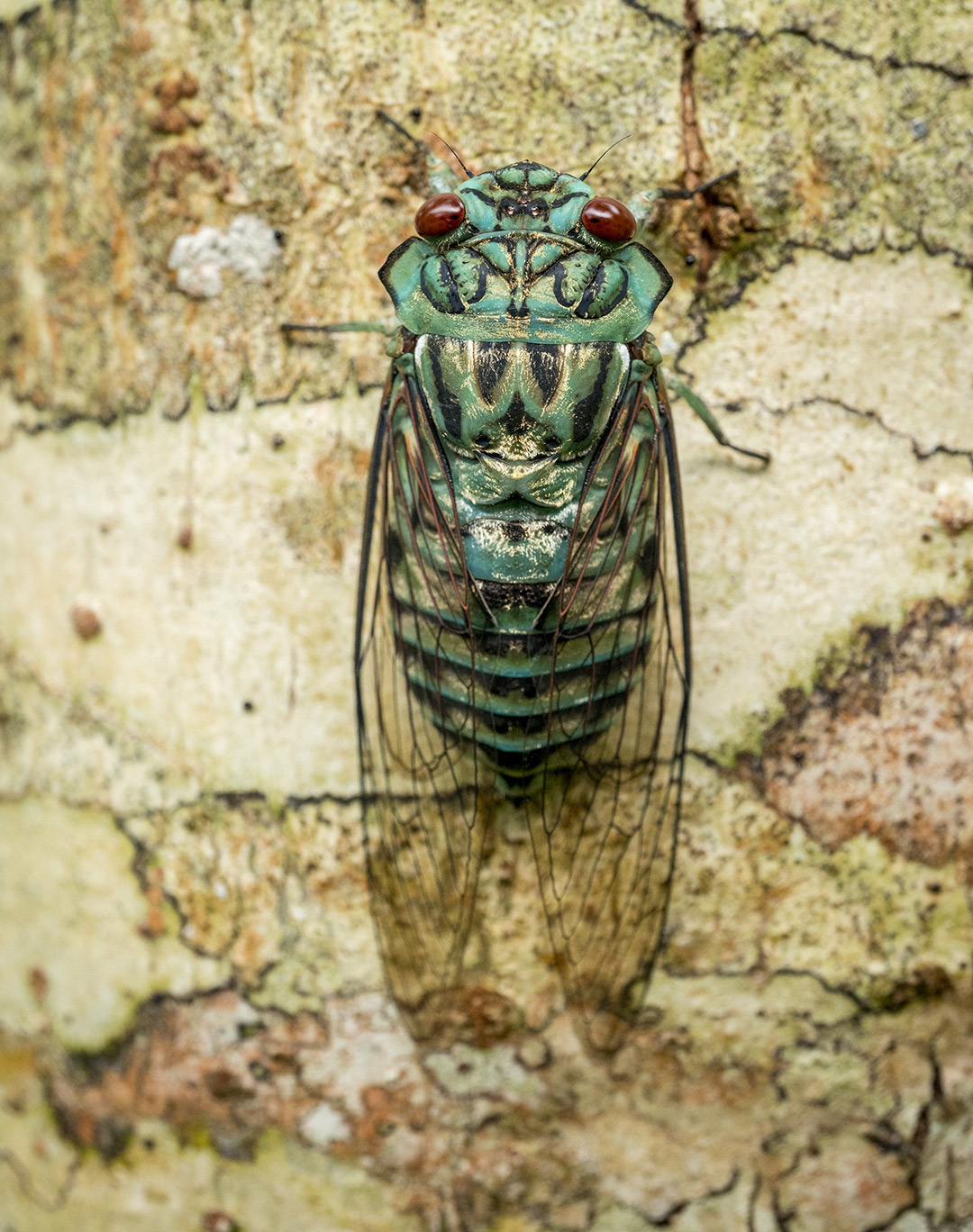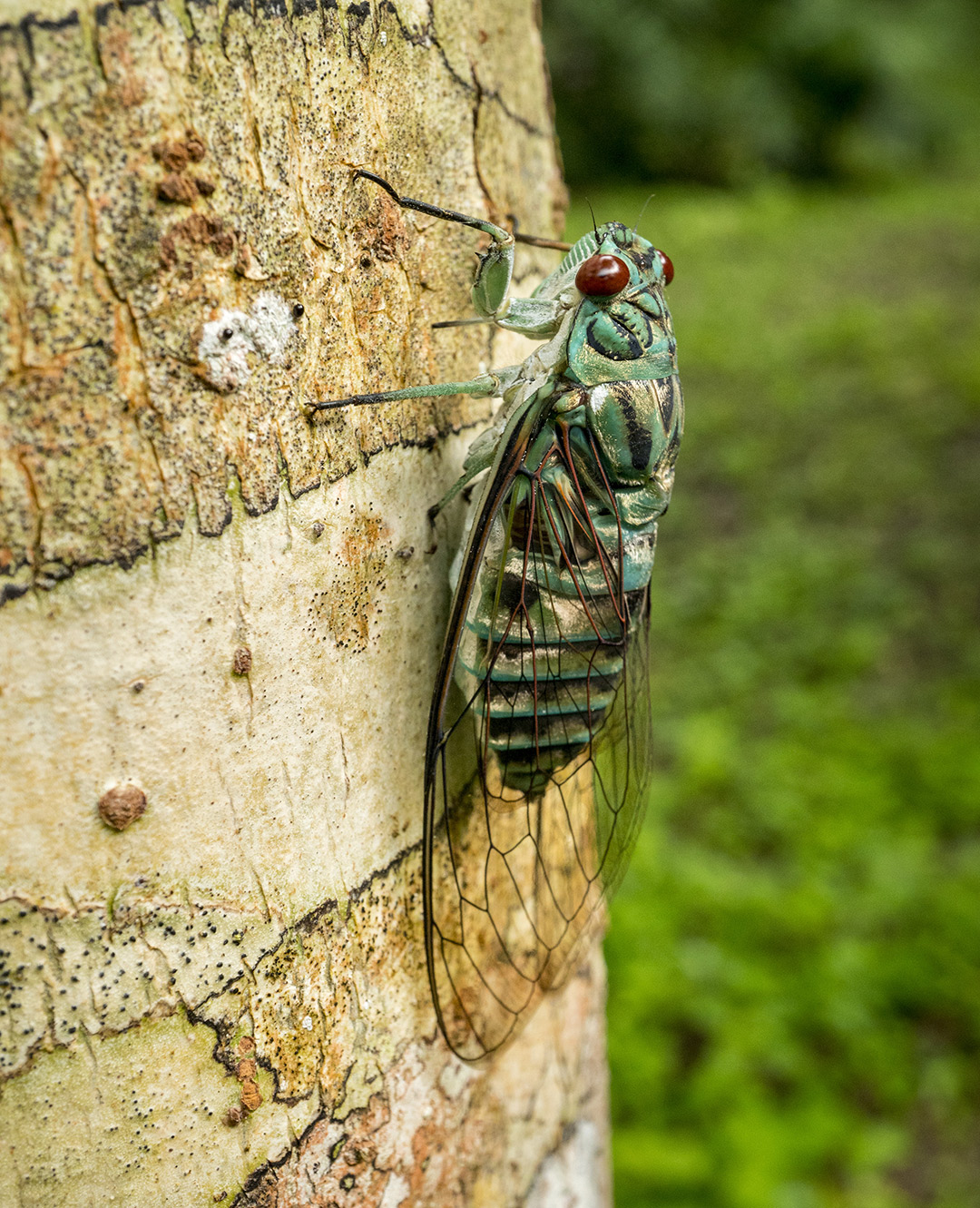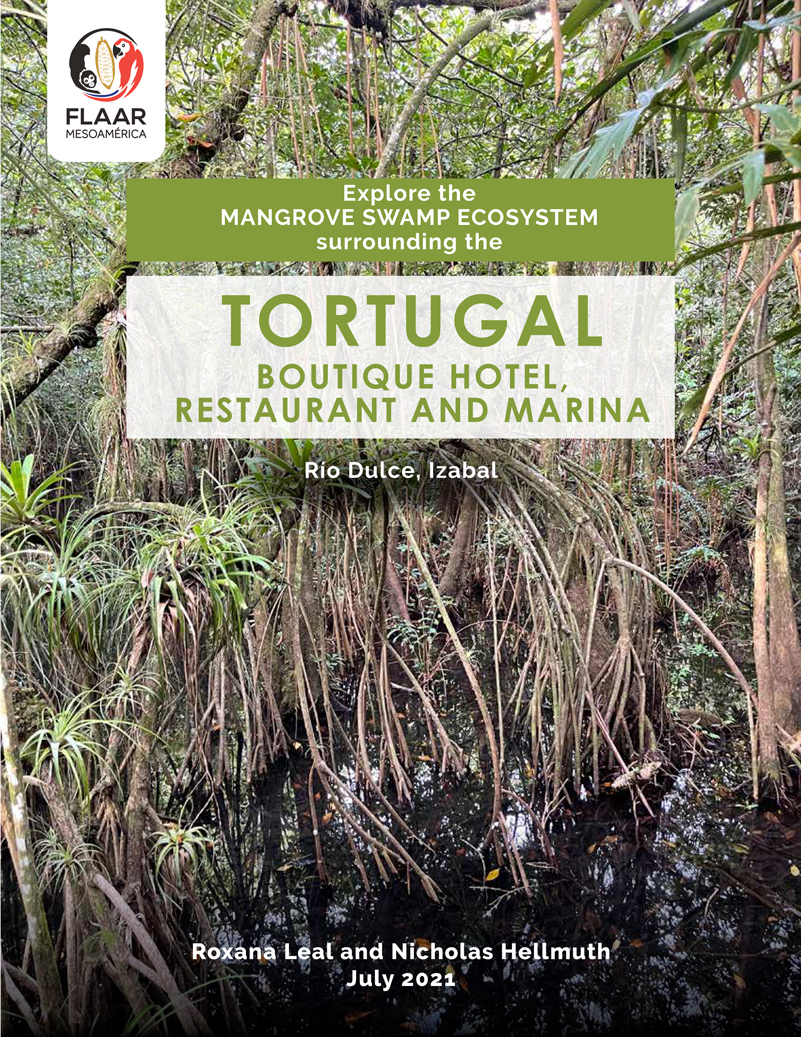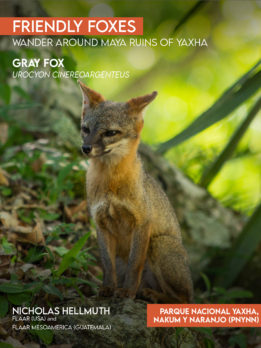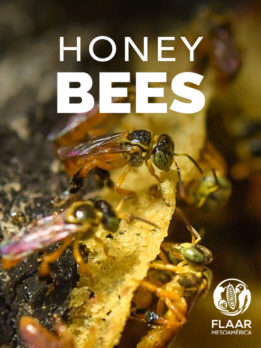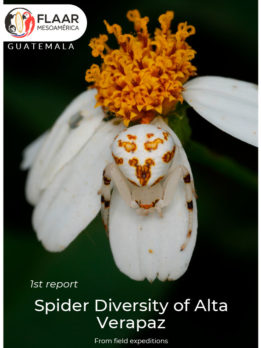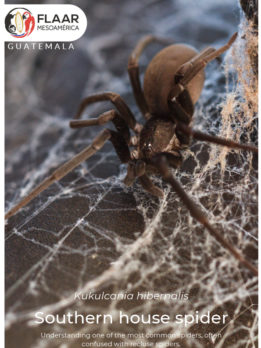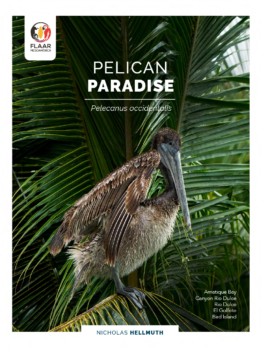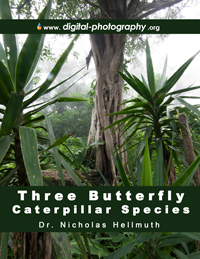What are Cicadas?
Cicadas are insects belonging to the Cicadoidea family of the order Hemiptera - the same order that bedbugs belong to, believe it or not - and there are more than 3,000 species. You can recognize them by their long transparent membranous wings and their colors that are generally brown, green, black or grayish, with mottled coloration patterns, but there are always exceptions like everything in nature. Its body is robust and on its head, in the middle of its eyes you can see 3 points that form a triangle called ocelli or simple eyes, these are primitive visual organs, present in many insects that allow them to capture light and shadow through photosensitive cells.
Life cycle
Cicadas are also known to remain buried for many years, although this does not occur in all species. Their life cycle begins when the female lays small eggs in grooves that she makes in the branches of trees, which serve as shelter and provide fluids to feed the juveniles when they hatch. When they are born they look like termites or small white ants, and when they grow a little more, they fall to the ground to dig and find roots on which to feed. They begin to dig tunnels and bury themselves to continue feeding on the roots of the trees and remain in this dynamic for up to 17 years and, why so long? Some hypotheses suggest that it is a defense measure against predators to favor the survival of the species. During this process, they continue in their juvenile stage, also called “nymphs”, but once they emerge again from the ground they begin to shed their exoskeleton -or skin-, their wings inflate and their skin hardens, now they are ready to begin their short adult life.
The Cicadas' song
Once they are in their adult stage, Cicadas stay in the trunks and treetops to find a partner and mate, for this, the males emit the unique sound that we already know and is called stridulation, which is also produced by crickets and other insects. According to Bauer, P. (n.d.) “each male Cicada has a pair of circular ridged membranes on the back and side surface of the first abdominal segment. Contraction of the tymbal muscle attached to the membrane causes it to bend, producing a clicking sound. The tymbal springs back when the muscle is relaxed. The frequency of the contractions of the tymbal muscle range from 120 to 480 times a second, which is fast enough to make it sound continuous to the human ear.” Males produce an almost permanent sound between March and April. (Yoshimoto, Cano & Orelllana, 2015).
What is most amazing about the noisy calling of Cicadas is that each species has its own distinctive song that only attracts females of its own kind. This allows several different species to coexist (Valdes, n.d.). So the next time you listen to Cicadas, pay attention because you won’t always listen to the same song twice.
Chicharra - Order: Hemiptera - Family: Cicadidae. Grupo Maler, Parque Nacional Yaxha. June 30, 2021. Photography: David Arrivillaga. Photo taken with a Sony A7R IV camera, Sony E 30mm F3.5 Macro lens, 1/125 sec, f/9, ISO 1600
Sony A7R IV camera,Sony E 30mm F3.5 Macro lens, 1/100 sec, f/10, ISO 1600
PDF, Articles, Books on Cicadidae in Guatemala, Mexico and Central America
- 2000
- Primer inventario de la biodiversidad entomológica relacionado a las asociaciones vegetales en la región semiárida del nororiente de Guatemala. Universidad de San Carlos de Guatemala. Facultad de Agronomía. Instituto de Investigaciones Agronómicas – IIA-.
Downloadable Online:
https://digi.usac.edu.gt/bvirtual/informes/puirna/INF-2002-025.pdf
- 2012
- Cicadidae (Homoptera) de Nicaragua: Catalogo ilustrado, incluyendo especies exóticas del Museo Entomológico de Leon. Rev. Nica. Ent., 72, Suplemento 2, 138 pp.
Downloadable Online:
www.bio-nica.info/RevNicaEntomo/72-2012-S2-Cicadidae.pdf
- 2013
- El canto de las Cigarras. Bioma.
Downloadable Online:
http://ri.ues.edu.sv/id/eprint/3175/1/el_canto_de_las_cigarras.pdf
- 2018
- Cicada fossils (Cicadoidea: Tettigarctidae and Cicadidae) with a review of the named fossilised Cicadidae. Zootaxa, Vol. 4438, Issue 3, pages 443-470.
Downloadable Online:
https://par.nsf.gov/biblio/10064041
- 2006
- New records for the cicada fauna from four Central American countries (Hemiptera: Cicadoidea: Cicadidae). Florida Entomologist 89(Mar 2006):75-79.
Downloadable Online:
www.researchgate.net/publication/232664044_New_records_for
_the_cicada_fauna_from_four_Central_American_countries_
Hemiptera_Cicadoidea_Cicadidae
- 2006
- New species, new records and checklist of cicadas from Mexico (Hemiptera: Cicadomorpha: Cicadidae). The Southwestern Naturalist 51: 255-257
Available Online:
www.researchgate.net/publication/232673331_New_records_of
_cicadas_from_Mexico_Hemiptera_Cicadoidea_Cicadidae
- 2009
- New records for the cicada fauna from four Central American countries (Hemiptera: Cicadoidea: Cicadidae)
Downloadable Online:
www.researchgate.net/publication/232664044_New_records
_for_the_cicada_fauna_from_four_Central_American_countries
_Hemiptera_Cicadoidea_Cicadidae
- 2010
- Two new species and new records of cicadas from Central America (Hemiptera: Cicadomorpha: Cicadidae). Studies on Neotropical Fauna and Environment, Vol. 45, Issue 2, pags 67-76.
Downloadable Online:
www.researchgate.net/publication/232875609_Two_new_species
_and_new_records_of_cicadas_from_Central_America_Hemiptera
_Cicadomorpha_Cicadidae
- 2012
- Checklist of the cicadas (Insecta: Hemiptera: Cicadidae) of Nicaragua including new records for seventeen species. Check List Vol. 8, No. 3, pags 437-442.
Downloadable Online:
www.biotaxa.org/cl/article/view/8.3.437
- 2013
- Biogeography of the Cicadas (Hemiptera: Cicadidae) of North America, North of Mexico. Diversity 5(2):166-23.
Downloadable Online:
www.researchgate.net/publication/284984008_Biogeography_of
_the_Cicadas_Hemiptera_Cicadidae_of_North_America_North_of_Mexico
- 2014
- Checklist of the cicadas (Insecta: Hemiptera: Cicadidae) of Costa Rica including new records for fourteen species. Check List Vol 10, No. 2.
Available Online:
https://checklist.pensoft.net/article/18882/
- 2017
- Listado de especies de Cigarras (Hemiptera: Cicadidae) en el Estado de Oaxaca, México y notas sobre la biología de Quesada gigas (Oliver).
Downloadable Online:
https://web.ciidiroaxaca.ipn.mx/jasanchezg/sites/web.ciidiroaxaca
.ipn.mx.jasanchezg/files/images/EM2242017_798-802.pdf
- 2017
- The Cicadas (Hemiptera: Cicadoidea: Cicadidae) of North America North of Mexico. Entomological Society of America.
- 2020
- La importancia de las Cigarras en México (Hemiptera: Cicadidae). Bol. Soc. Mex. Entomol. 6(2): 27-33.
Downloadable Online:
www.researchgate.net/publication/344077627_LA_IMPORTANCIA
_DE_LAS_CIGARRAS_EN_MEXICO_HEMIPTERA_CICADIDAE
- 2002
- Cicada acoustic communication: potential sound partitioning in a multispecies community from Mexico (Hemiptera: Cicadomorpha: Cicadidae). Biological Journal of the Linnean Society, Vol. 75, Issue 3, pages 379–394.
Downloadable Online:
https://academic.oup.com/biolinnean/article/75/3/379/2639682?login=true
- 2015
- Guía de identificación de insectos. Pro Natura Foundation Japan, Universidad del Valle de Guatemala, Museo de Historia Natural de la Universidad de San Carlos de Guatemala.
- 2018
- Insectos de importancia agrícolas. Guía básica de entomología. Costa Rica y Centroamérica. Programa Nacional de Agricultura Orgánica (PNAO). 204 pp.
Downloadable Online:
www.mag.go.cr/bibliotecavirtual/H10-10951.pdf
Suggested web pages with photos and information on Cicadidae in Guatemala, Mexico and Central America
www.britannica.com/story/why-are-cicadas-so-noisy
Why Cicadas so noisy?
www.cicadamania.com/
All about Cicadas, information, photos, species with its descriptions and sounds
www.museocostarica.go.cr/divulgacion/articulos-educativos/las-chicharras/
Information and photos
www.naturalista.mx/taxa/50186-Cicadidae
Information and species list
www.sierraclub.org/ecocentro/blog/2021/06/cuando-cantan-las-chicharras-when-cicadas-sing
When the Cicadas sing
First posted, August 2021.
Bibliography and article prepared by Vivian Hurtado, FLAAR Mesoamerica.


